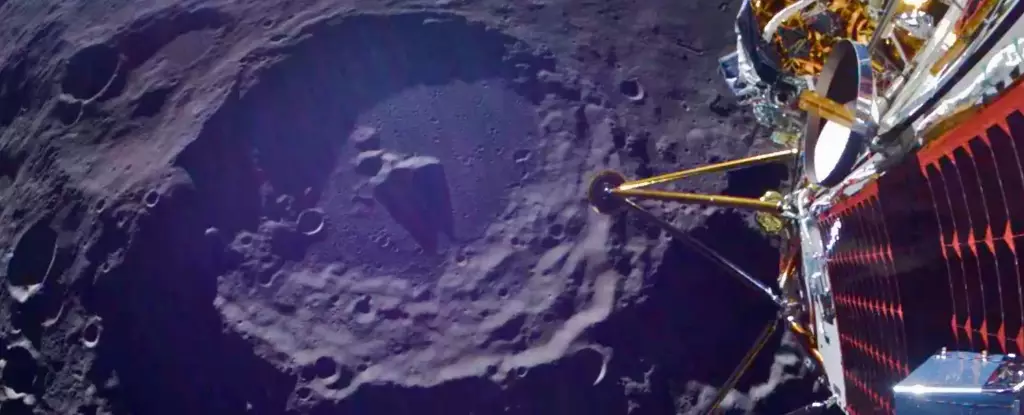Intuitive Machines, a trailblazing aerospace firm based in Houston, is set to make significant strides in lunar exploration with its latest mission to the Moon. Scheduled for March 6, 2025, at 12:32 PM ET, this ambitious venture aims to land Athena, their latest hexagonal lander, at Mons Mouton, a region near the lunar south pole that remains largely uncharted. If successful, this mission will not only extend the reach of robotic explorers but also support the broader goals of NASA’s Artemis program, which seeks to return humans to the Moon in pursuit of sustainable presence and eventual travel to Mars.
The excitement surrounding this mission is palpable, with NASA’s associate administrator for science, Nicky Fox, remarking that the operation feels reminiscent of a scene from a science fiction movie. This enthusiasm underlines the blend of real-world scientific aspiration with the imaginative potential that space exploration embodies. The spotlight is on Intuitive Machines following their first lunar landing, which, while a historic achievement, ended in a disappointing topple—a critical learning moment that has shaped their preparations for this forthcoming attempt.
Technological Marvels and Experimental Innovations
At the heart of Athena’s mission lies an array of cutting-edge technologies designed to illuminate unknown aspects of the lunar environment. Accompanying Athena are three rovers and the innovative hopping drone named Grace, which pays tribute to computer science pioneer Grace Hopper. This drone, unique in its capacity to leap between locations, is set to investigate a permanently shadowed lunar crater—an area deprived of sunlight and thus a likely reservoir of water ice and other essential materials. Such exploration could provide crucial insights into sustainable living on the Moon, potentially paving the way for future human habitation.
The mission’s payload also includes the largest rover, MAPP, which aims to demonstrate how a 4G cellular network can function on the lunar surface. This initiative, developed in collaboration with Nokia Bell Labs, represents a significant forward leap in telecommunications technology for space exploration. By establishing a cellular link between the lander and Grace, Intuitive Machines seeks not just to enhance robotic communication but also to lay the groundwork for astronauts’ network connectivity in future lunar missions.
Another rover, named Yaoki, is engineered to endure tumbles in any orientation—highlighting the unpredictable nature of lunar terrain. Meanwhile, the AstroAnt rover, notably smaller, is equipped with magnetic wheels that enable it to attach to MAPP, gathering temperature data that is critical to understanding the Moon’s environmental conditions beneath the surface. These explorative missions align with the larger ambitions of NASA’s $2.6 billion Commercial Lunar Payload Services (CLPS) program, established to foster partnerships with private companies and facilitate exploration through innovative approaches.
The Challenge of Lunar Landing
The quest to land Athena on the Moon is fraught with complexities. Unlike Earth, the Moon’s lack of atmosphere eliminates the possibility of parachute-assisted landings, compelling engineers to develop precise thrust and navigational strategies to ensure a controlled descent. The previous mission of Intuitive Machines saw the first lander, Odysseus, misjudge its landing speed and topple due to insufficient power from its solar panels. Learning from these challenges, the team has implemented critical upgrades to their navigation systems, showcasing the kind of iterative innovation that is essential in the high-stakes world of aerospace exploration.
This mission symbolizes more than just another lunar landing; it represents a growing movement of private enterprise stepping boldly into territory traditionally dominated by national space agencies. The successful landing of Firefly Aerospace’s Blue Ghost lander just days prior adds competitive pressure on Intuitive Machines to deliver a robust performance, amplifying the stakes for this pioneering expedition.
Looking Ahead: The Future of Space Exploration
As the world eagerly awaits the live broadcast of Athena’s landing attempt, it is clear that the passion and commitment of Intuitive Machines are contributing to a transformative era in space exploration. With the Artemis program poised to reestablish human presence on the Moon, the implications of these robotic missions extend far beyond their immediate goals. The data collected from these explorations will offer invaluable insights into the Moon’s environment and resources, supporting humanity’s long-term aspirations of interplanetary travel.
In this context, Intuitive Machines stands at the forefront of a new chapter, where the collaboration between private sector entities and governmental agencies will redefine what is possible in space exploration. The anticipated mission is not just a test of technology, but a bold declaration of intent—one that resonates with the age-old human desire to explore the unknown and expand our horizons beyond Earth.

